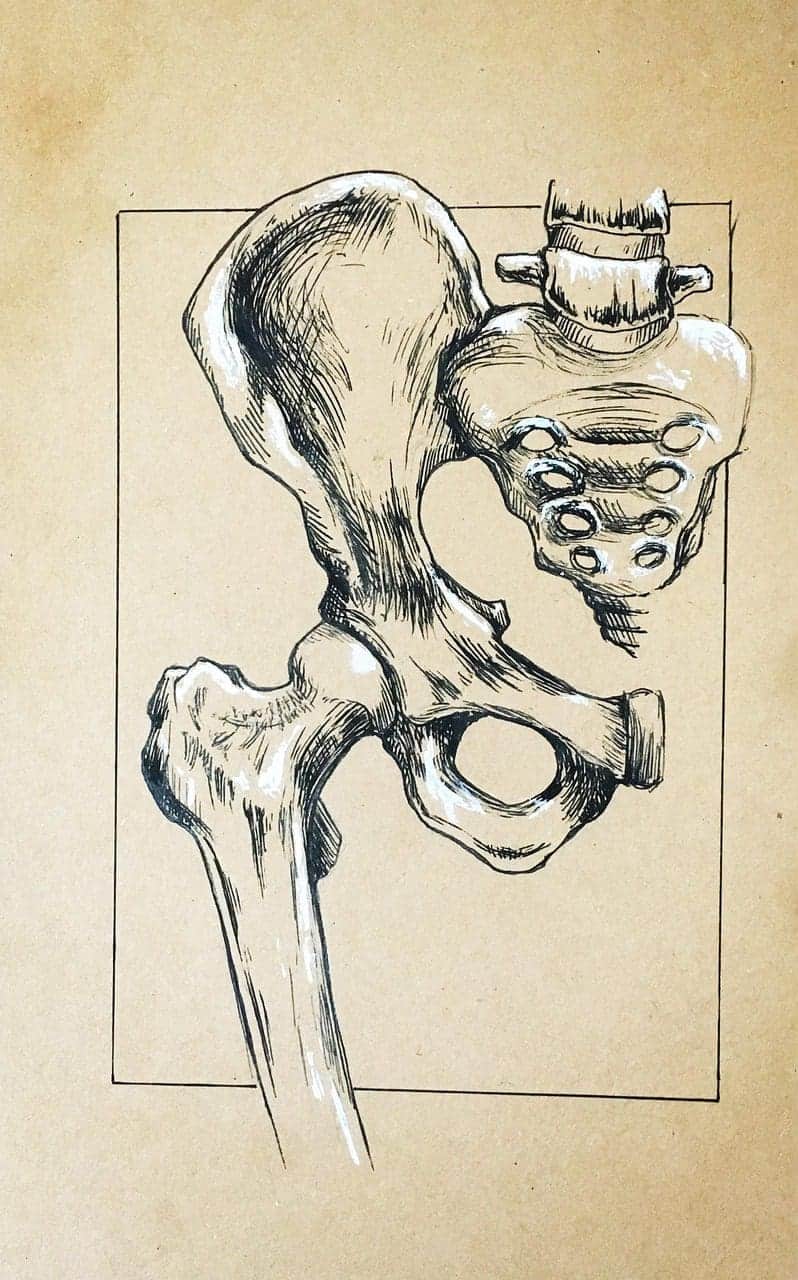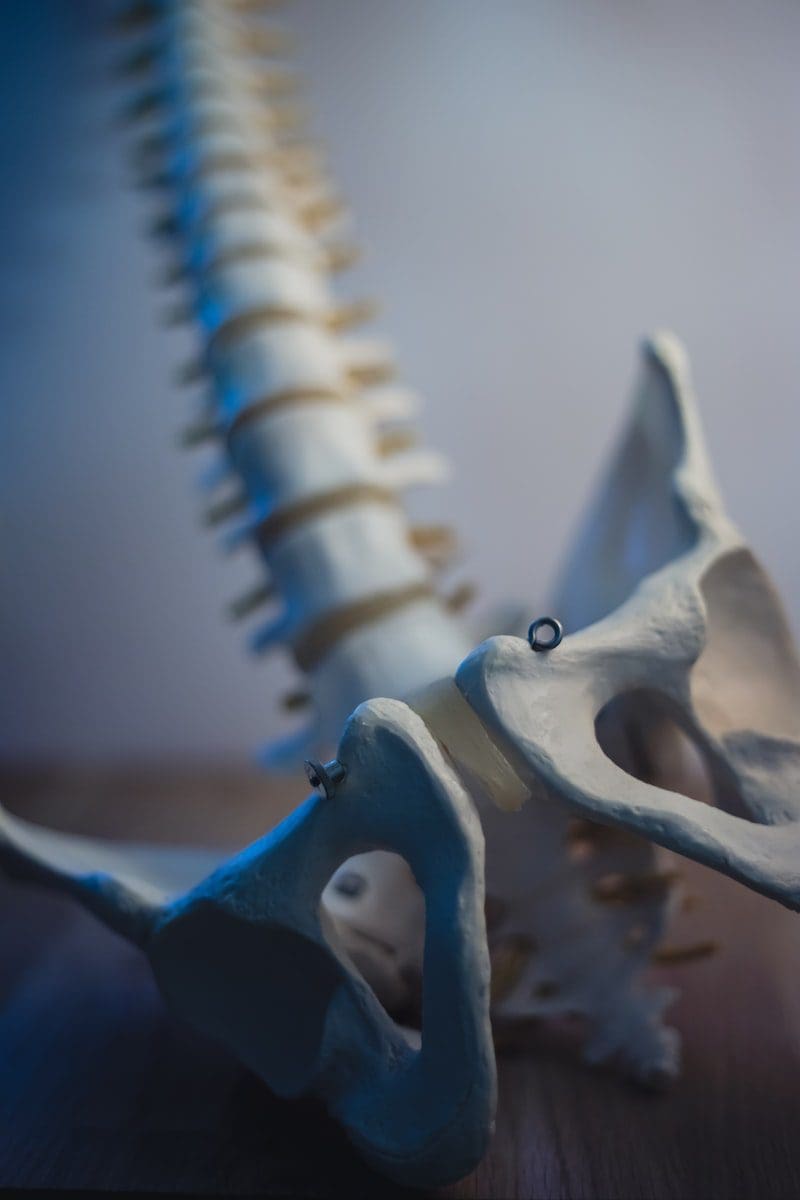Anatomically, physically, and functionally, there are many significant differences in the structures of the male and female skeleton. To a distance, both the skeleton looks the same, but focusing on the minute details and features, the difference can easily be obtained.
One such structure is the pelvis or pelvic girdle of the male and female bodies. The structure differs in function, shape, and size for both sexes.
Key Takeaways
- The male pelvis is larger and heavier, with a narrower pelvic inlet and deeper pelvic cavity. The female pelvis is wider and shallower, with a larger pelvic inlet to accommodate childbirth.
- The male pubic arch is less than 90 degrees, while the female pubic arch is greater than 90 degrees.
- The male coccyx curves inward, while the female coccyx curves outward to make childbirth easier.
Male Pelvis vs Female Pelvis
The difference between Male Pelvis and Female Pelvis is that the size of the pelvis of the male is shorter and narrower along with the heavy and thick bones, while comparatively, the size of the pelvis of the female is larger and wider along with the dense and light bones. Also, the male pelvis inlet is heart-shaped, while the female pelvic inlet or brim is a slightly oval shape.

Male Pelvis is the base of the spine and the socket of the hip joint. It comprises three different bones – the hip bones, sacrum, and coccyx.
The male pelvic bone is smaller and narrower. The pubic arch of the male is V-shaped.
Also, the pelvic inlet is heart-shaped. The purpose of the pelvic body is to support the men’s heavy body and strong muscles.
The female Pelvis is also the base of the spine and the hip joint socket. The size of the pelvis, if compared to that of the male pelvis, is larger and wider.
The pelvic arch of the female pelvis is wider, and the female’s pelvic inlet is slightly oval. The purpose of the female pelvis is to support the child while in pregnancy.
Comparison Table
| Parameters of Comparison | Male Pelvis | Female Pelvis |
|---|---|---|
| Size | Short and narrow with heavy and thick bones | Large and wide with light and dense bones |
| Sacrum | Long and narrow | Wide and shorter, less curved |
| Pelvic Inlet | Heart-shaped | Slight oval shaped |
| Acetabulum | Larger | Smaller |
| Pubic Arch | V-shaped | Wider |
| Pelvic Outlet | Narrower | Wider |
| Pelvic Bone | Heavy, tall, and much thick | Thinner and Denser |
| Obturator Foramen | Round | Oval |
| Purpose | Supports the heavy body and muscles of the men | Supports childbearing and the easier child delivery |
| Sciatic Notch | Narrower | Wider |
| Coccyx | It is projected inwards (less curved anterior) and immovable. | Flexible and straight |
What is Male Pelvis?
The male pelvis is considered the base of the spine and the hip point socket. The shape of the male pelvis is short and narrow.
The bone of the pelvis is heavy and thick, and it is present to provide support to the heavy body built of the men and their heavy muscles. The pelvis bone is divided into three other bones – the two hip bones, the sacrum, and the coccyx.
The sacrum bone of the pelvis is long, narrower, and straight in size. The pelvic inlet or brim of the males is heart-shaped, the pubic arch of the pelvis is V-shaped, and the angle between is less than about 90°.
The pelvic outlet and the sciatic notch are narrower. The coccyx’s location is projected inwards, less curved from the anterior side, and immovable.

What is Female Pelvis?
The female pelvis is also the base of the spine and the hip point socket. The shape of the female pelvis is large and wide or broader.
The bone of the pelvis is light in weight and denser and is present to solve the purpose of holding a child during pregnancy and the safe delivery of the child.
The bone of the pelvis is divided into three other bones that are the two hip bones, the sacrum, and the coccyx. The sacrum bone of the females is wide and short and is less curved.
The pelvic inlet or brim of the female is slightly oval in shape, and the pubic arch of the pelvis is wider and is greater than 90°. The pelvic outlet and the sciatic notch are wider.

Main Differences Between Male Pelvis and Female Pelvis
- The size of the male pelvis is shorter and narrower, and the bone of the pelvis is heavy and thick, while on the other hand, the size of the female pelvis is larger and wider, and the bone of the pelvis is lighter and denser.
- The sacrum bone present in the male pelvis is longer and narrower, while on the other hand, the sacrum bone of the female pelvis is wider, shorter, and is less curved.
- The pelvic inlet of the male pelvis is in the heart shape, while on the other hand, the pelvic inlet of the female pelvis is in a slightly oval shape.
- The acetabulum of the male pelvis is larger compared to that of the female pelvis, which is smaller.
- The pubic arch of the male pelvis is in a V-shape, while on the other hand, the pubic arch of the female pelvis is wider in shape.
- The pelvic outlet of the male pelvis is narrower in shape as compared to that of the pelvic outlet of the female pelvis is narrower.
- The male pelvic bone is heavy, tall, and much thicker, while compared to that of the female pelvic bone is quite thin and denser.
- The bone called the obturator foramen in the male pelvis is round-shaped, while compared to the other hand, the obturator foramen present in the female pelvis is oval.
- The main purpose of the pelvic bone in the male body is to support the heavy body and muscles, on the other hand, the presence of the female pelvis is to support the child during pregnancy and easy delivery.
- The sciatic notch of the male pelvis is narrower, while on the other hand, the sciatic notch of the female pelvis is wider.
- The location of the coccyx in the male pelvis is projected inwards (that is, less curved anteriorly) and is immovable, while comparatively, on the other hand, the coccyx of the female pelvis is flexible and straight.

References
- https://www.sciencedirect.com/science/article/abs/pii/S0002937833901945
- https://www.ncbi.nlm.nih.gov/pmc/articles/PMC1252596/
- https://jamanetwork.com/journals/jama/article-abstract/251228
- https://www.pnas.org/content/113/19/5227.short

The article eloquently presents the distinctions between male and female pelvis structures. The comprehensive information is beneficial for medical professionals seeking a deeper understanding of human anatomy.
Absolutely, the anatomical differences illustrated in the article provide a valuable resource for the medical community.
The differences in the male and female pelvis are quite significant. The noteworthy variations in shape and structure are explained in great detail in this article.
Well said, Erin. Understanding these anatomical differences can lead to advancements in orthopedics, obstetrics, and other specialties.
Absolutely, the article provides a comprehensive overview of these differences, which are crucial for various medical fields.
This article is a great resource for understanding the structural differences between male and female pelvis. The content is highly informative and useful for medical studies.
I couldn’t agree more. The detailed breakdown of these differences is indispensable for healthcare professionals seeking in-depth knowledge.
Absolutely, the article presents the information in a comprehensive and accessible manner, making it beneficial for various medical fields.
Great article! It’s important to understand these structural differences to gain a better understanding of male and female anatomy.
Absolutely, it’s fascinating to see how these differences impact function and overall physiology.
This article successfully highlights the key differences between male and female pelvis structures. The comprehensive details are highly beneficial for medical education and practice.
I completely agree, having detailed knowledge of these anatomical variations is essential for healthcare professionals.
The comparison table provided is very helpful. It’s easy to see the distinct differences between male and female pelvis structures.
I agree, having detailed comparisons like these can serve as a valuable resource for medical professionals and students.
Absolutely, having a deep understanding of these differences is crucial for accurate diagnoses and treatment plans.
This provided a clear explanation of the anatomical differences between male and female pelvis. It’s a great article for those interested in the subject.
Indeed, understanding these differences can contribute to advancements in healthcare and wellness.
I agree, the breakdown was very informative and easy to understand.
The detailed breakdown of male and female pelvis anatomy provided in this article is commendable. It serves as an excellent resource for medical professionals and students.
Absolutely, the article’s emphasis on anatomical differences offers valuable insights for various medical disciplines.
I completely agree, the article’s detailed examination of male and female pelvis structures contributes to a deeper understanding of human anatomy.
The comparison of male and female pelvis structures is crucial for understanding the differences in anatomy. This article provides a thorough and detailed analysis.
Absolutely, the article’s depth of information makes it a valuable reference for medical research and education.
Well expressed, Caroline. The clarity and depth of the content make it an essential read for those in the medical field.
These distinctions are crucial for various medical disciplines. The detailed comparison provides a deep insight into the differences in male and female pelvis anatomy.
Well articulated, Joel. The intricate details of these anatomical differences provide valuable knowledge for healthcare providers.
Absolutely, having a comprehensive understanding of these differences is imperative for medical professionals.